I can’t wait to do my taxes, said no one ever. This especially rings true if you live in Portland, Oregon.
According to a report from Ernst & Young, Multnomah County now has the second-highest total state and local income tax rate in the nation of 14.69%. New York City has the highest in the nation at 14.78%.
That’s not all. The top tax rate kicks in for single taxpayers with incomes above $125k and joint filers at $250k. By comparison, New York City’s top tax rate doesn’t kick in until $25 million.
This means some Uplevel clients could pay approximately the same state and local tax rates as New York City residents and celebrities Jay-Z and Jerry Seinfeld.
Ouch.
Wondering how this is possible? Here’s how it adds up:
- Oregon income tax is 9.9% on income over $125k for single filers and $250k for married filing jointly. Note: Oregon does not tax Social Security benefits.
- The Oregon transit tax is a statewide 0.10% payroll tax that employers withhold from employee wages.
- The Portland Metro area, including Multnomah, Washington,and Clackamas Counties, assess a homeless service tax of 1% for single filers with income over $125k and married filing joint filers with income above $200k.
- In addition to the above, Multnomah County residents pay a Preschool for All Personal Income Tax. Joint filers with incomes above $200k pay 1.5%, and an additional 1.5% on taxable income above $400k.
- Note: Not a resident of Multnomah County? You may not be in the clear. If your income is sourced within the county, you are subject to the tax thresholds. Also, the rate will increase by 0.8% in 2026.
Looking to lower your tax burden? Here are 9 things to consider.
1. Understand how the numbers work
Taxes are complicated. We’ve simplified things by creating a single place to review contribution limits, tax brackets, and deductions.
2. Max out retirement plan contributions
High inflation put pressure on the IRS to give healthy bumps to annual contribution limits for 2023. For 401(k)s, 403(b)s, most 457 plans, and Thrift Savings Plans, the limit is now $22,500. If you’re 50 or older, you are eligible for an additional “catch-up” contribution of $7,500, raising your total contribution eligibility to $30,000.
Stashing more money away in retirement accounts via pre-tax dollars helps lower your adjusted gross income (AGI), which also reduces your taxes. While a lot of folks intuitively understand this, a recent Vanguard report found that only 14% of people with Vanguard 401(k) accounts were contributing the maximum amount allowed. The majority of these people made more than $150,000.
3. Take advantage of employer benefits
Participating in benefits your employer offers like Flexible Spending Accounts (FSAs), Dependent Care FSA, and Health Savings Accounts (HSAs) are ways to save money and lower taxes.
There are also situations where it can be advantageous to combine benefits in order to maximize tax savings. Here are two examples:
- If you qualify for your employer’s deferred compensation plan, it may make sense to accelerate your contributions in a given year while also exercising some of your stock options in order to stay within a certain tax bracket.
- If you have stock options that are subject to vesting, filing an 83(b) election could be advantageous for your tax situation.
4. Review your paycheck, particularly if you’ve changed jobs
If you worked for more than one employer last year, it’s possible you had too much Social Security tax withheld from your pay. In 2022, wages up to $147,000 were subject to Social Security tax, or $9,114 at the 6.2% Social Security contribution rate.
New employers don’t take into account wages from a previous position in calculating these taxes, so it’s up to you to monitor. If you had more than the maximum withheld, you may be eligible for a credit on your tax return for the excess amount.
Bonus tip: it’s also prudent to review the total amount deducted from your final paycheck for FSAs and HSAs. We’ve encountered situations where deductions were made from a client’s last paycheck but were never deposited into their accounts.
5. Consider Roth conversions
A Roth IRA conversion takes all or part of your existing traditional IRA balance and moves it into a Roth IRA. The money in a traditional IRA hasn’t been taxed yet, so in converting you will owe tax on the amount you convert.
Why would anyone pay taxes early? There are a few good reasons:
- Providing you meet certain requirements, Roth IRA withdrawals are tax-free in retirement.
- Unlike Traditional IRAs, Roth IRAs do not have required minimum distributions (RMDs) once you reach age 72 or during your lifetime. So, your money continues to grow tax-free.
- Roth IRAs are some of the best types of accounts to pass on to beneficiaries. While your heirs will have to take RMDs, they won’t have to pay any federal income tax on the withdrawals. Given recent legislation changes, inheriting Roth assets is even more favorable.
A Roth conversion can be a great option for some and a costly mistake for others. Here are 4 important considerations to make before converting your traditional IRA into a Roth IRA.
6. Be strategic with charitable contributions
Donating appreciated holdings, such as stocks, mutual funds or exchange traded funds (ETFs) held more than one year directly to charity can reduce your tax liability. The benefit of this type of donation is twofold:
- Rather than having to sell appreciated investments to generate cash to donate, and incurring capital gains that are taxed up to 23.8% each year, the shares can be directly transferred to a charity
- You receive the market value of the shares as a tax deduction and the charity can subsequently sell the investments tax-free because of its non-profit status.
If you’re looking to turbocharge your tax deductions, consider a Donor Advised Fund (DAF) “bunching” strategy. A DAF is an account established specifically for charitable giving and can be funded with appreciated holdings, among other things. Several years of charitable contributions are then “bunched” into a single tax year–enough to exceed the standard tax deduction–and charitable donations are spread out over several years.
7. Be mindful of the types of investments you hold
There’s an endless sea of investment options to choose from. If you have a taxable brokerage account and it aligns with your financial plan, it may make sense to utilize municipal bonds and/or exchange traded funds (ETFs).
Municipal bonds are like loans you provide for a set timeframe to your local, state or federal government. You can likely find quality and generally safe muni bonds that provide tax-free interest payments.
ETFs tend to be more tax-efficient than most mutual funds and usually incur less taxable distributions.
8. Tax-loss harvesting
Strategic tax-loss harvesting involves selling some of your investment holdings that are currently at a loss, using the proceeds to invest in something substantially equivalent for 31 days or longer, and utilizing the tax loss to offset capital gains taxes from other investment sales.
If you don’t already have capital gains, you can offset up to $3,000 in ordinary income with realized capital losses. A word of caution however–be sure to familiarize yourself with wash sale rules before repurchasing a security sold at a loss, or you may find yourself in a bit of hot water with the IRS.
9. Improve your home’s energy efficiency
If you’re looking to make improvements to your home, consider energy-efficient upgrades. Thanks to the recent Inflation Reduction Act, improvements like solar panels, energy-efficient windows and doors, heat pumps, and more offer tax rebates and financial incentives.
Adding It All Up
Whatever your tax situation, being strategic with your planning can save thousands of dollars in a given year. If you’re ready to create a plan, or just unclear where to go next, please reach out. We’re here to help.
Uplevel Wealth is a fee-only, fiduciary wealth management firm serving clients in Portland, OR and virtually throughout the U.S.




